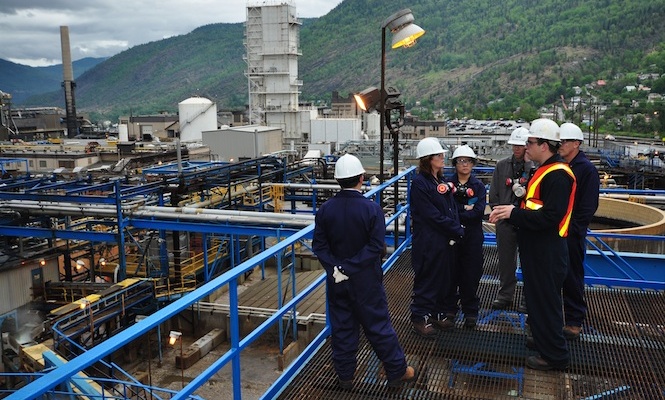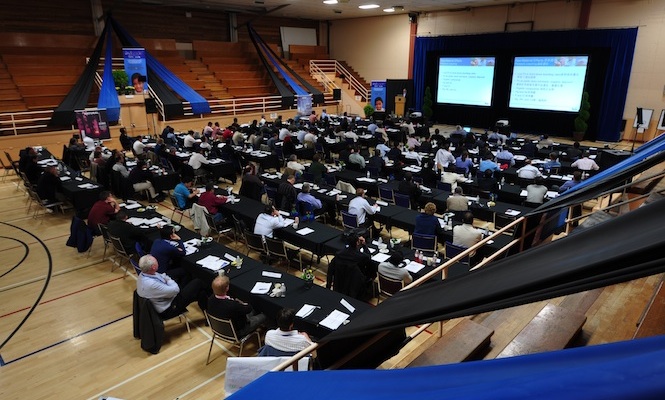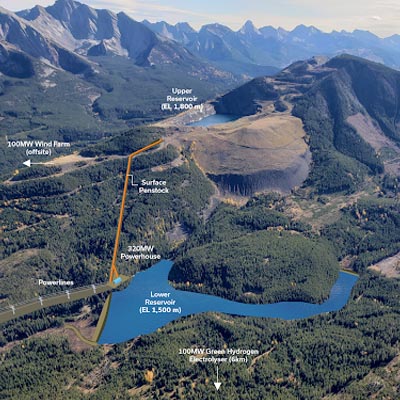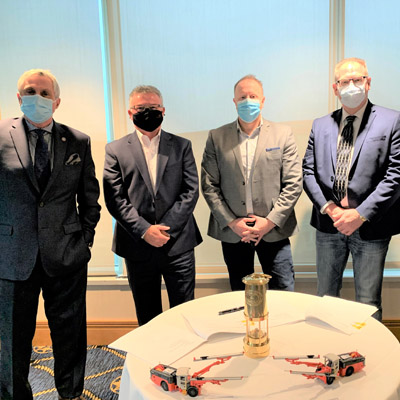The elements of education
The world came to Trail, British Columbia, when the city hosted the International Zinc Association’s Zinc College in May 2010
Let’s start with the numbers. Zinc (Zn) has an atomic number of 30 with a standard atomic weight of 65.38 grams per mol-1. It is the first element in Group 12 on the periodic table, the 24th most abundant element in the Earth’s crust and the fourth most common metal in use. Canada is the fifth largest zinc producer behind China, Peru, Australia and the United States. The main uses for zinc are in anti-corrosion agents; batteries; brass and other alloys; compounds such as zinc oxide, which is used as a white pigment in paints; fire retardants; and, perhaps most importantly, medicines and nutritional supplements.
The Teck Metals Ltd. (TSX:TCK) lead-zinc smelter in Trail, British Columbia, is one of the largest in the world; in 2009, refined zinc production totalled 240,000 tonnes, which was used primarily in galvanizing agents for the auto industry. So it was only natural that the community of Trail would host the International Zinc Association (IZA) 2010 Zinc College in May 2010—the first time the event has been held in Canada.
The Kootenay connection
According to IZA executive director Stephen Wilkinson, Trail was a natural choice for the event.
“IZA likes to have the venues near production facilities,” said Wilkinson, speaking from IZA’s headquarters in Brussels, Belgium. “The natural beauty of British Columbia and the Kootenays made it very special for the 140 international guests (about 125 participants and 20 lecturers). As well, Don Lindsay, CEO and president of Teck Resources, is the current IZA chairman so it was a very appropriate fit.”
From A to Z(inc)
The IZA is a non-profit organization that represents zinc producers from around the world. Its priority is to promote zinc’s essential role in human health, crop nutrition and product applications through innovative programs in sustainability, environment and health, technology, market development and communications.
According to Wilkinson, the IZA also has key programs in enhancing crop productivity and ultimate zinc content in humans through adding zinc to soils and crops.
“We’re showing designers, specifiers and government bodies why zinc is a green material (the Zinc for Life program),” said Wilkinson.
The IZA’s Zinc College is a major weeklong conference that includes lectures, discussions and case studies that focus on current topics within the sector including mining and metal production, sustainability, education and collaboration.
Valuable opportunities
Wilkinson and the representation of zinc industry heads were impressed by the welcome they received in Trail.
“There was a tour of Teck’s zinc and lead refineries and the students were very impressed with Teck’s facilities,” he said. “As well, there were optional tours to Teck’s Highland Valley copper mine and the (electronics) recycling facilities. At the end of the week, participants completed a survey and, from their perspective, it was a huge success.”
Richard Deane, the manager of energy and public affairs with Teck Metals Ltd., was pleased when the IZA granted Trail the honour of hosting the international gathering.
“These (events) are normally done in big conference centres where you have lots of amenities like hotels and transportation available,” said Deane, “but the City of Trail and Trail operations and the local community pulled together a great effort.”
“It was quite a feather in our cap to be able to host it here,” agreed Carol Vanelli Worosz, the communications director for the Trail operation. “We pursued having it here because we are one of the largest integrated zinc-lead smelters in the world.”
Partnering to save lives
The most important subject of discussion this year was IZA’s partnership with UNICEF for the Zinc Saves Kids campaign.
“This is indeed special,” said Wilkinson. “First, we all need zinc on a daily basis and most of us get our daily zinc requirement of 15 milligrams through the foods we eat. However, there are many people in the world—almost one-third of the population—who do not get sufficient zinc and this zinc deficiency leads to 450,000 children deaths per year and over 800,000 deaths annually.”
IZA is supporting UNICEF’s zinc micronutrient programs in countries like Peru and Nepal, where zinc deficiencies are among the deadliest in the world. Wilkinson stressed that this was just the beginning of IZA’s involvement in global health.
“We believe that this program should be as important as polio, malaria and other health issues,” he said, “and we will elevate this awareness to national governments and other organizations to see whether we can alleviate this critical problem.”






